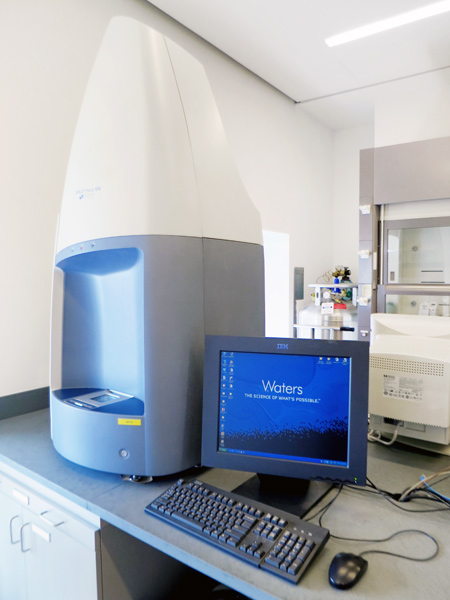The Straus Center for Conservation and Technical Studies is fortunate to have some very sophisticated equipment to aid our conservation scientists in their work. One such piece, the MALDI (matrix-assisted laser desorption ionization time of flight mass spectrometry), gives the analytical lab a way to identify proteins present in works of art—a necessity in helping conservators choose appropriate materials when treating a work.
For instance, MALDI can determine if animal glue was used as a pigment binder or whether tempera paint really contains just egg yolk. Proteins that may be found in works of art include casein from milk, collagen from muscles and bone, and keratin from skin and hair. In some cases, MALDI can even determine an animal source down to the species level.
The technique is extremely sensitive and requires only microscopic samples just barely visible to the naked eye. Prior to analysis, the protein in a sample is broken down by enzymes into smaller pieces known as peptides. These peptides are unique to the protein and allow us to differentiate proteins from one another. The masses of the peptides are recorded during analysis, in a process known as peptide mass fingerprinting (PMF). The resulting spectra are then compared to reference samples for identification.
Much of our work with the MALDI, kindly gifted to the museums by the Waters Corporation in 2010, has focused on creating an expansive reference library. Collaborations occur frequently between different Harvard institutions, including the Peabody Museum of Archaeology and Ethnology and the Weissman Preservation Center, to work on such objects as life-size kayaks or photographs in old Harvard class albums. Currently we are using MALDI to determine the paint composition in two unique drawings by Morris Louis held in our collections.
For more about the advanced equipment in the Straus Center’s analytical lab, check back for additional stories in the coming weeks.
Georgina Rayner is the Andrew W. Mellon Postdoctoral Fellow in Conservation Science at the Harvard Art Museums.

